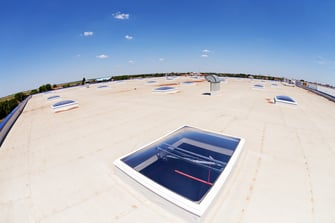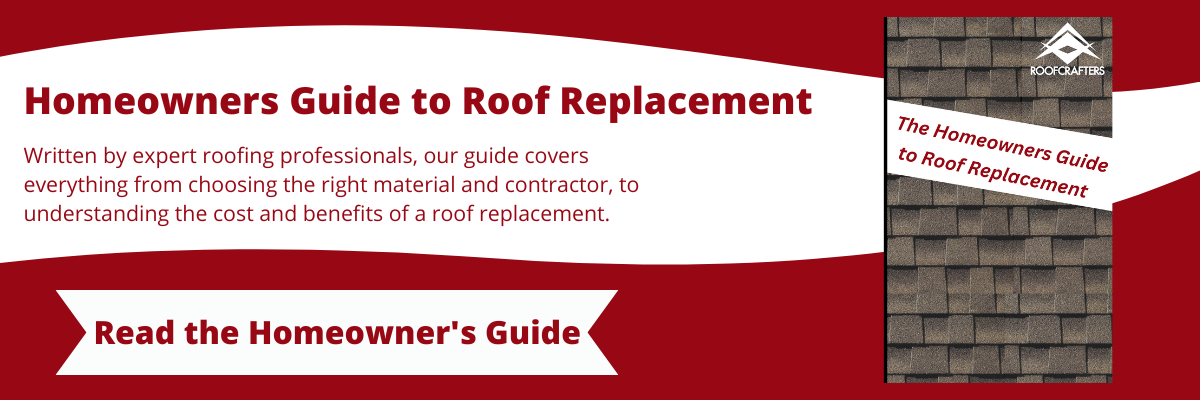
As sustainability becomes an increasingly crucial aspect of modern construction practices, businesses and building owners are seeking roofing solutions that are both durable and environmentally responsible! Among the array of choices, TPO (Thermoplastic Polyolefin) roofing has emerged as a popular option for its energy efficiency and cost-effectiveness. However, questions remain about its true environmental impact and whether it can be considered a genuinely sustainable roofing solution.
We're glad you landed here because RoofCrafters has been a name in the industry for nearly thirty years. We know that as the world changes, expectations for roofing systems change. Sustainability is the new thing in a lot of industries, and we understand if you want to get down to the bottom of which options truly are.
In this article, we delve into the world of TPO roofing, exploring its material composition, energy efficiency, recyclability, and other factors to determine whether it lives up to its reputation as an eco-friendly choice. By the time you finish reading, you'll be a TPO roofing expert, bringing you one step closer to your new roof! Let's dive in.
What Does Sustainability Mean in Roofing?
Environmental friendliness- what does it actually mean? When you think about what makes roofing environmentally friendly, you may consider where it's manufactured or what the raw materials are made of. Sustainability goes beyond that, however, and how the roof performs over time and how it's disposed of after it's used plays a crucial role in how "green" it is.

Crucial factors that are highly considered in roofing are durability, longevity, and the material's resistance to heat absorption. Various roofing materials are known for their high heat reflectability and higher sustainability outcome, which helps drastically lower heat costs, making them more energy-efficient.
- Slate Roofing
- Metal Roofing
- Wood Shakes and Shingles
- Clay Tile
But where does TPO fit in? Remember- the answer lies in what it's made of, how it's used, and how it's disposed of at the end of its life.
When questioning sustainability, check the source of the raw material. According to the definition, a sustainable product or material is made without permanently damaging or depleting its resources. You may also include ensuring that sourcing the material doesn't cause irreparable damage to the Earth.
Several factors go into determining if a roofing material is technically sustainable, and there's a fine line between truly "green" and not green but slightly sustainable. In the roofing world, finding an option that's 100% kind to the environment may not happen, but you can browse choices that are better for our planet.

Tip: On the hunt for a sustainable roofing option? Check to see if your choice contains recycled materials. The higher the percentage, the more environmentally friendly, though keep in mind that it may be less durable. Ensure the material can be recycled again when it's time to replace it.
TPO On the Sustainability Scale
Que the scale! On a scale of 1-10, TPO roofing would typically rank around 7-8 in terms of environmental sustainability.
TPO roofing has several eco-friendly features that contribute to its relatively high sustainability rating:
- Energy Efficiency: TPO roofs have a reflective surface that helps to reflect sunlight and reduce heat absorption. This energy-efficient characteristic can lead to lower building cooling costs, reducing overall energy consumption.
- Recyclable Materials: TPO roofing is made from a blend of polypropylene and ethylene-propylene rubber, both of which are recyclable materials. TPO roofing can be recycled at the end of its life cycle, reducing waste and the demand for new raw materials.
- Low Chemical Emissions: TPO roofing is typically free from harmful chemicals like chlorofluorocarbons (CFCs) and halogens, making it a safer and more environmentally friendly roofing option.
- Light as a Feather: TPO roofing is lightweight compared to some other roofing materials, which can reduce the structural load on buildings and potentially save resources during construction.
However, it's essential to note that the environmental sustainability of TPO roofing can vary based on several factors, including the manufacturer's practices, transportation of materials, installation techniques, and disposal methods at the end of its life cycle.
.jpg?width=317&height=211&name=sigmund-aI4RJ--Mw4I-unsplash%20(1).jpg)
While TPO roofing is considered a relatively environmentally sustainable roofing option, it's not the most sustainable roofing material available. Other roofing choices, such as metal roofing or green roofs (vegetative roofs), can rank higher on the sustainability scale due to their longer lifespans, more excellent recyclability, and potential for energy generation or natural habitat creation.
Ultimately, when evaluating the environmental impact of any roofing system, it's essential to consider the entire life cycle of the material, from raw material extraction to production, installation, use, and eventual disposal or recycling. Working with reputable roofing contractors and choosing sustainable roofing materials can help businesses contribute to a greener future and reduce their environmental footprint.
Is Sustainable Roofing the Choice for Me?
With the world and its practices changing every day, we find ourselves wondering more and more, "How can I be environmentally conscious?" Even when it comes to roofing, you can still take charge and find an option that suits your preferences. Check out our learning center for more information on sustainable roof types, costs, and so much more.
Ready to get in touch with an expert? We're more than thrilled to assist you. And while you're at it, feel free to check out our comprehensive roofer checklist to help you decide how to find an excellent roofer for your project.
At RoofCrafters, we take pride in offering anyone who chooses us optimal service and a caring set of hands. If you want to touch base one of our friendly representatives, make your way over to our contact page.
My name is Kevin Mills, and I am the lead estimator for RoofCrafters’ Tampa division. I’m originally from Michigan, and I enjoy hunting, fishing, and spending any free time outdoors. What I’m most passionate about, though, is helping business owners and homeowners alike achieve their roofing goals, all while providing a seamless customer journey.





